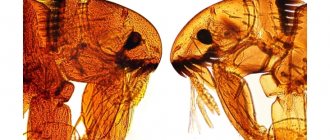general information
Problems of oncology remain the focus of attention of veterinarians around the world due to the constant increase in incidence and poor treatment prognosis. Oncological diseases are a serious problem of our time, because of which many lives are extinguished, including not only human ones. Oncological diseases in animals today are one of the most common reasons why owners turn to a veterinary oncologist. Unfortunately, the number of calls for such diseases is not decreasing, and their timeliness depends entirely on the owners.
What is oncology?
Oncology is a fairly young branch of veterinary medicine. She studies the causes and mechanisms of development of neoplasms (tumors), their symptoms, methods of diagnosis, treatment, as well as prevention.
Tumors (neoplasms) are local redundant, autonomous, atypical pathological growths of one or more body tissues that arise for no apparent reason due to the proliferation of cellular elements caused by changes in the biological properties of cells.
Diffuse melanoma of the iris
What types of neoplasms exist?
Tumors, based on their growth pattern and clinical course, are:
- Benign and malignant;
- Primary and metastasized;
- Single and multiple;
- Superficial, intracavitary, intraorgan, tumors of the central nervous system.
Benign tumors grow by pushing away surrounding tissue. As a rule, they are well delimited from them by a dense capsule and are not life-threatening. In contrast, malignant tumors grow by wedging (infiltrating) into surrounding tissues, destroying them. Moreover, if there is, for example, a blood vessel in the path of the tumor, it destroys it and bleeding occurs, if there is a nerve, pain occurs.
The adhesion between malignant tumor cells is very poor. As a result, some cells of this tumor can break away from the main tumor and spread through the bloodstream to other organs and tissues, that is, metastasis begins. Also, sometimes benign tumors can degenerate into malignant ones.
They are also classified according to morphological characteristics:
- Epithelial (papillomas, adenomas, carcinomas, cystomas, dermatomas);
- Connective tissue (fibromas, myxomas, lipomas, chondromas, osteomas, melanosarcoma);
- Nervous tissue (gliomas, neuromas, meningiomas);
- Muscular (fibroids, rhabdomyomas);
- Vascular (hemangiomas and lymphangiomas);
- Mixed (osteosarcomas and fibromyxochondromas, fibrochondroosteoma).
The problem of malignant neoplasms is of great interest, both in the biological and in the medical-veterinary aspect. There is hardly any other scientific problem that would attract such a large number of researchers from various directions.
Tumors are widespread in nature and occur not only in humans, but also in all species of the animal world, including domestic and wild animals.
Diverse in their form and structure, but united in a number of patterns of origin, development and clinical manifestation, as well as influence on the body, human and animal tumors constitute one group of diseases, fundamentally different from others, and thus have general biological significance.
In the pathology of the human body, malignant neoplasms represent one of the complex problems of both theoretical and practical medicine, and the fight against tumor disease is the most pressing task of public health. Although the significance of tumor pathology in animals is not adequate to human cancer, the problem of malignant neoplasms in veterinary medicine is quite relevant not only in a purely utilitarian sense, but also in comparative oncology. Tumors of farm animals and birds in some cases cause large losses of meat products due to the culling of tumor-affected carcasses or parts of them, and also cause disturbances in the reproduction of livestock. Malignant tumors are a fairly common cause of death in valuable service, hunting and decorative dogs.
It is known that many issues of experimental oncology were solved using laboratory animals with induced and transplanted tumors. Thus, the patterns of tumor development have been successfully and in sufficient detail studied; Some features of metastasis of malignant neoplasms and recurrence of blastomatous growth have been clarified; The importance of endogenous and exogenous factors in the occurrence and development of various induced tumors has been studied.
However, many patterns of clinical manifestation of various processes in animals with experimental tumors are far from identical with those in animals (especially in humans) with spontaneous tumors. In many respects, data from experimental oncology, unfortunately, cannot be fully used by clinical oncology.
Regarding the most practically important problem of the treatment of malignant neoplasms, it turned out that many drugs or methods of treating tumors, which gave quite satisfactory or even excellent results in the treatment of experimental tumors, turned out to be ineffective or completely useless in the treatment of spontaneous tumors of humans and animals. This is why the use of animals, in particular dogs, with spontaneously occurring tumors seems more promising for the discovery and development of effective anticancer agents. An important circumstance is that dogs, both in biological essence and in some living conditions, are closest to humans. And this means, as it seems to us, that the clinical manifestation of the main patterns of the tumor process of these animals is characterized by similarity to a much greater extent.
Issues related to the study of the etiology and pathogenesis of malignant neoplasms and the search for the most effective control measures are so relevant that international, national and other committees and special bureaus have been created to coordinate all work on the problem of cancer. Currently, in a number of countries there are zoo-oncological centers designed to implement a program for the study of comparative pathology of tumors.
Thus, the Advisory Council on Comparative (Veterinary) Oncology has been created at the World Health Organization (WHO). The first step in the activities of this Council was the development of an international histological classification of tumors of domestic animals. Then a long-term program was developed to study the biological manifestations and treatment of tumors in domestic animals, primarily dogs.
The essence of the blastomatous process is associated with the altered nature of the body cell. Having arisen under the influence of carcinogenic factors through the transformation of normal cells of the body, tumor cells acquire special biological properties, and above all unlimited reproduction, form a tumor germ, which is the only source of development and growth of the tumor. Remaining at the stage of immaturity, possessing unlimited reproduction, cancer cells continue to divide indefinitely. This is due to the fact that the growth and development of a tumor is not subject to the general biological law of the body - the law of determination. This, to a certain extent, reveals the peculiarity of the autonomy of tumor growth.
You should know that, once a tumor has arisen, it grows continuously, sometimes slowly, sometimes quickly, until it leads to the death of the host organism or until it is destroyed by medicinal agents.
Dogs are in first place in terms of the incidence of tumors. Tumors are more common in them than in humans.
The question of the causes of malignant neoplasms is the most difficult in the entire cancer problem. There are many different theories about the origin of cancer. Many of these theories turned out to be untenable and have only historical significance.
Recent decades have been characterized by extensive research into the genetics of cancer and oncogenic viruses. The question of the viral origin of tumors has been debated for a long time. However, despite certain successes in resolving a number of controversial issues, there is no reliable evidence that all cancers arise as a result of viral exposure. There is still no direct evidence of the viral nature of human tumors. As for animals, the viral nature of some tumors has been proven both by clinical observations and experimentally. But here too there are controversial issues.
Currently, most oncologists, and primarily clinicians, believe that environmental factors are of decisive importance in the occurrence of tumors.
Clinical observations and numerous experiments on animals using modern technology and sophisticated methods of biological research have made it possible to establish a certain role in carcinogenesis of chemicals, physical factors, and ionizing radiation. Thus, from a clinical point of view, we can talk about a multiplicity of causes that lead to the occurrence of malignant tumors.
As already mentioned, a tumor arises from normal cells of the body as a result of peculiar proliferative processes. As a result of exposure to carcinogenic factors, uneven diffuse hyperplasia of cellular tissue elements occurs at the very beginning. Subsequently, against the background of this hyperplasia, multiple microscopic foci of proliferation of immature homogeneous cells appear. Gradually increasing, and in places merging, focal proliferations form a tumor node isolated from the surrounding tissue. At this stage, the tumor is characterized by expansive growth and a benign course. Subsequently, the tumor begins to infiltrate (grow) surrounding tissues and destroy them and, thus, acquires the features of a malignant tumor. In some cases, infiltrative and destructive growth appears from the very beginning of the development of the tumor focus, bypassing the stage of benign development.
Benign tumors grow slowly, do not metastasize, and do not recur after surgical removal. Malignant tumors are characterized by rapid growth, metastasize and, in most cases, recur.
Primary multiplicity of tumors is common in dogs. The frequency of such cases varies between benign and malignant neoplasms. Primary multiplicity is more often observed in benign tumors. These tumors can have different histological structures and appear simultaneously in different places. Malignant tumors are much less likely to be primary multiple. Sometimes there is a combination of benign and malignant tumors. If there are several tumors, it is necessary to find out whether it is a metastasis. Thus, with breast tumors, tumors are often found in other lobes or in regional lymph nodes.
Observations have shown that the clinical manifestation of tumors of the same histological structure varies in different animal species. Thus, melanosarcoma in horses is more malignant than in dogs. After careful and complete surgical removal of even a relatively small melanotic node, relapses and metastases occur in the horse. The outcome of surgical treatment of melansarcoma in dogs, even in the presence of metastatic nodes, is usually favorable. The location of the tumor in the same animal species also matters. It is known, for example, that the so-called “venereal” (transmissible) sarcoma of the genital organs of dogs, despite the absolute similarity of the histological structure with sarcomas of other localizations, is characterized by a benign course. After surgical removal or radiotherapy, even in advanced cases, this sarcoma does not recur and metastasizes extremely rarely. This is explained by the fact that sarcoma of the vagina and penis of dogs is characterized by special biological properties that determine a benign clinical course, and this property is preserved even in cases where the tumor occurs by implantation outside the specified location, for example, in the area of the lips, oral mucosa.
Such phenomena are also observed when an emerging benign tumor, under the influence of external influences, turns into a malignant one (subjects to malignancy). Thus, a 15-month-old boxer developed a cancerous ulcer after ligating a wart in the upper jaw with a harsh thread. It was excised, the wound healed, but three weeks later a relapse occurred and a metastasis was established in the mandibular lymph node. After 22 days the dog died. At the autopsy, total generalization of the blastomatous process was established. Under the influence of mechanical action (ligation with a harsh thread), the wart (papilloma) turned into cancer. With bone sarcomas after amputation of a limb, in the vast majority of cases, in the next two to four months, a miliary form of metastases occurs in the lungs, followed by the death of dogs. Non-operated animals live longer.
Benign tumors have a harmful effect on the body in that, having arisen in the area of vital organs and increasing in size, they can compress the tissues of the organ and disrupt its function. Thus, intracranial tumors disrupt brain activity and lead to the death of the animal. Sometimes they cause; serious complications, such as intestinal strangulation, bleeding, obstruction of a hollow organ (esophagus, intestine, ureter, urethra). In all other cases, these tumors, with prolonged and slow development, reach enormous sizes without causing general disorders of the body.
Malignant tumors, even when small in size, cause serious disturbances, being a source of distant metastases and generalization of the tumor process. Due to infiltrative growth, they destroy tissue locally and in areas of development of secondary (metastatic) nodes. With bone sarcomas, for example due to destruction of bone tissue, spontaneous fractures are observed; with the development of metastatic tumors in the area of the deep iliac and aortic lymph glands in cases of primary damage to the last (4th and 5th) lobes of the mammary gland and with seminomas in dogs, paralysis of the pelvic limbs and organs of the pelvic cavity occurs. In a malignant tumor, necrobiosis and necrosis of tumor tissue, as well as hemorrhages and bleeding, often occur. The decay products of tumor tissue, when absorbed, cause intoxication of the body. Rapidly growing tumors consume a significant amount of nutrients necessary for the functioning of the body. All this leads to exhaustion.
Currently, statistical material has been accumulated that allows us to talk about some patterns of organ localization of spontaneous neoplasms, determined by the species characteristics of animals, the habitat and conditions of their economic use, as well as natural and climatic factors.
Some tumors occur constantly in certain animal species, others are rare or have not yet been registered by anyone. Thus, chorionepithelioma observed in humans is not described in animals; Rare tumors in humans are quite often observed in animals (Sertoli cell tumors in dogs). Stomach cancer in dogs is extremely rare: only three dozen cases have been described in the world literature. Tumors of the uterus, ovaries, and cervix in dogs are reported very rarely, but tumors of the vagina are often observed. Mammary tumors in dogs account for 34–46 percent of all types of tumors. Tonsil cancer is much more common in dogs in London than in dogs in other areas and other countries. The frequency of this localization is about 20 percent. In our material, tonsil cancer occurred in isolated cases. H. Kruk (Sweden), analyzing data from autopsies of 7248 dogs for the period from 1935 to 1952, discovered tonsil cancer in only 15 cases. This difference in the incidence of tonsil cancer in dogs is determined by the degree of air pollution with carcinogens. Getting on the fur, and when licked into the oral cavity, these substances accumulate in the crypts of the tonsils and, at a certain concentration, contribute to the occurrence of cancer. In these cases, dogs can be considered as a kind of indicators of the degree of air pollution.
In some parts of India, horn cancer is observed in cattle, with rates ranging from 93 to 97 percent in oxen and 3 to 7 percent in cows. Usually one horn, the right or left, is affected. The frequency of cancer in this localization can be judged because 1414 oxen with this pathology are registered during the year. The cause of horn cancer has not yet been established. But the most mysterious thing is that sick animals are registered only in four provinces of India and nowhere else, both in India itself and in other areas of the globe.
Recognition of malignant neoplasms in animals is quite difficult. In most cases, there is no pain at the onset and in the initial stage of tumor development. Therefore, during the initial examination of a sick animal, the neglect of the tumor process is often determined, especially with damage to internal organs. The exception is bone sarcomas, in which, even in the early stages, dysfunction of the limbs (claudication) occurs due to a pain reaction.
With visible tumors of the skin, limbs, mammary gland, external genitalia, tumors of the head, neck, and torso, dog owners turn to veterinary specialists for help much earlier. However, in almost many cases there is an underestimation of the very fact of the presence of a tumor, which leads to diagnostic errors and loss of time.
As a rule, tumors, especially at the beginning of development, do not cause general disorders of the body and have little effect on the behavior of the sick animal. Often, dog owners themselves, due to their incompetence, believe that cancer treatment is a hopeless matter. However, experience shows that in many cases, with rational recognition and timely treatment, even in advanced cases, it is possible to obtain a stable and long-term cure for sick animals.
When diagnosing tumors, anamnesis is of great importance. It is necessary to find out the time of tumor appearance, the speed and rate of its growth. It is known that with hormonally dependent tumors (mammary gland, anal glands in dogs), an uneven rate of tumor growth is observed: progressive growth is sometimes replaced by regression. This is due to the influence of certain hormones, the activity of which is associated with the phases of the sexual cycle or with dysfunction of individual parts of the hormonal system. When interviewing animal owners, information about pathological discharge from natural orifices (vagina, nipple canal, preputial sac, ear) is important. It is necessary to take into account the presence of vomiting, its appearance depending on the intake of food, repetition, etc.
When examining an animal, you should pay attention to such important details of the clinical picture of the disease as the appearance of the tumor, its shape and size (size). Palpation (feeling) determines the consistency, nature of the tumor surface, boundaries and its connection with surrounding tissues, depth, displacement, and the presence of foci of necrosis (ulcers, fistulas). A hard or dense consistency, a lumpy surface and fairly clear boundaries are characteristic of malignant neoplasms.
The presence of abdominal tumors is determined by bimanual palpation. In this case, dense, lumpy, painless nodes are usually palpated, which are sharply displaced depending on their location. Thus, tumors of the spleen and small intestine are characterized by significant displacement; with tumors of the liver, kidney, prostate, uterine body and ovaries, their mobility is limited. The topography of the affected organs is critical. Sometimes a tumor can cause pathological changes in an organ, which are mistaken for primary tumor growth. Thus, a relatively small tumor of the dog’s bladder, located in the area of its neck, caused obstruction of the lower end of the ureter, as a result of which hydronephrosis of the corresponding kidney developed. The dog was admitted to the clinic with a “kidney tumor.”
In some localizations of both primary tumors and metastases, paresis and paralysis of the limbs may occur. Therefore, when examining a sick animal, you should pay attention to signs indicating disturbances in the motor function of the nerves, causing lameness and loss of sensitivity in the corresponding zones of skin sensitivity. Thus, with the development of a tumor in the axillary (axillary) region, paralysis of the thoracic limb of the same side occurred.
The occurrence of a tumor in the spongy tissue of the vertebral body and growth into the spinal canal is usually accompanied by paraplegia of the thoracic or pelvic limbs, depending on the lesion of the corresponding segment. In these cases, local signs are usually absent and are often not established even radiographically until the cortical layer of the vertebra remains intact. In these cases, the diagnosis is made topically.
An important objective method for diagnosing tumors is x-ray examination.
In some cases, in order to clarify the diagnosis for diseases of the abdominal organs, a diagnostic operation is necessary. Thus, for tumors of the spleen, intestine, uterus, ovaries, splenoctomy (removal of the spleen), amputation of the uterus, resection of the intestine is performed, as a result, one or another duration of treatment is ensured depending on the type of tumor, the presence of metastases, etc.
When diagnosing malignant neoplasms, the blood picture should be taken into account. In some cases, data from hematological studies may have a certain auxiliary diagnostic and prognostic value.
The fight against tumor disease is complex and difficult. If certain pathogens of infectious diseases and the patterns of development of the infectious process are known, then it is possible to develop a system of effective preventive measures and eliminate the disease (epidemic). As for malignant neoplasms, preventive measures are limited only to the early identification of patients, followed by a detailed examination and decision on the need for appropriate treatment.
Treatment of sick animals is carried out taking into account their economic value and other useful qualities, depending on the stage of the blastomatous process, the presence of metastases, the condition of the sick animal, prospects for further use, etc.
Despite the fact that much in the problem of cancer remains not completely resolved, clinical oncology in a number of cases successfully carries out the fight, both in the broad sense of prevention and treatment of cancer patients. Modern principles of treatment are based on the complexity of the use of various drugs and methods: surgical, radiation and medicinal. In recent years, work on clinical immunotherapy has been developed.
It is known that under the influence of external and internal factors of carcinogenesis, local lesions arise in the body in the form of tumor growths, and certain general disorders occur (dysfunction of the nervous system, metabolic disorders, endocrine system disorders, dyshormonal phenomena, etc.). Clinical experience shows that the pathogenetic onset is largely associated with the tumor itself, and after destruction or total removal of the tumor, in many cases a stable and long-term cure occurs.
In veterinary practice, surgical treatment is the main method. However, the effectiveness of surgical treatment, even if the necessary oncological radicalism is observed, is not always high. This is explained by the fact that surgical treatment is carried out with a great delay. Dogs with tumors are delivered to clinics at a late stage of development of the tumor process, a year and a half after its discovery. During this time, it slowly progressed and all this time the owners (including doctors!) were in no hurry to treat their pets. The use of radiation therapy in animals is extremely limited for obvious reasons.
Currently, intensive research is underway on cancer immunotherapy.
The surgical method for treating malignant neoplasms in animals is quite effective if the following conditions are met.
1. The tumor must be extirpated within healthy tissue; cure is possible only after complete removal or neutralization of all tumor elements. This means that the tumor must be removed en bloc along with regional lymph nodes and a gland (for example, mammary). Do not cut or remove the tumor in parts.
2. The success of treating sick animals depends not only on radical removal of the tumor, but also on simultaneous (or preliminary) effects aimed at improving the body’s defense reactions or restoring its disturbed states.
3. When performing a surgical operation, it is necessary to follow the rules of ablastics and antiblastics in order to prevent implantation relapses. These rules provide for: inadmissibility of damage to tumor tissue during tumor removal: frequent changes of instruments or re-sterilization during surgery: careful stopping of bleeding, repeated washing of hands with a 2% solution of chloramine or ether alcohol.
4. Surgical removal of tumors should be carried out under combined anesthesia or local anesthesia. In this case, the anesthetic solution should be injected only into the tissue surrounding the tumor; when removing exophytically growing tumors (skin, penis, vagina, oral cavity, etc.), pain relief is carried out by injecting a solution under their base. When extirpating large, deep-lying tumors, anesthesia should be carried out in layers, as the tumor is separated, avoiding trauma to it.
P. F. Terekhov, Doctor of Veterinary Sciences, Service Dog Breeding Club
What causes cancer?
Unfortunately, it is impossible to give a definitive answer to the question about the causes of neoplasms. Today, there are several theories about the origin of tumors. Viral-genetic theory - according to this theory, a virus with a genetic apparatus is integrated into a cell and can lead to tumor transformation of the cell. As soon as tumor cells begin to divide, the virus loses its significance; Physico-chemical theory - it is believed that the main cause of the development of tumors is the impact of physical and chemical factors on the body, such as X-ray radiation, gamma radiation, various carcinogenic substances, which lead to oncological transformation of the genetic material of cells; The theory of dishormonal carcinogenesis - various hormonal disorders in the body are considered as the cause of tumors; Dysontogenetic theory - this theory considers the cause of the development of tumors to be various disturbances in the structure of tissues during embryogenesis, in which, under the influence of provoking factors, oncotransformations of the gene apparatus of tissue cells can occur; The theory of four-stage carcinogenesis - it includes all of the above theories.
Forty Guardians of the Genome
The TP53 gene, which encodes the p53 protein, plays a key role in protection against cancer (Fig. 3). He is called the "guardian of the genome." Mutations in the TP53 gene are found in most types of human malignancies. If the “guard” stops working normally, the cells become invulnerable to apoptosis, their proliferation increases, and chromosome instability increases [18], [20].
Figure 3. The role of p53 protein in stopping cell proliferation (a) and apoptosis (b)
Primary information of p53 gene
In human cells, the TP53 gene is represented by one copy or two alleles. The loss of at least one of them leads to Li-Fraumeni syndrome. People with this defect have a greatly increased risk of developing malignant tumors: the probability of developing cancer during their lifetime is more than 90% [20].
Two guards is good, but forty is even better. This is exactly the number of alleles of the TP53 gene found in African elephant cells. Moreover, only two of them, like in humans, are “correct”. The rest lack introns. This suggests that additional copies of the gene arose through retrotransposition, a phenomenon when RNA is formed during transcription, then DNA is synthesized on its template with the participation of reverse transcriptase, which is integrated into the new locus [20], [21]. In the genome of Asian elephants, from 15 to 20 such copies (30–40 alleles) are found [20].
As a result, elephant cells with damaged DNA are twice as likely to undergo apoptosis as human cells. Interestingly, these animals did not follow the path of DNA repair, but rather the path of p53-dependent apoptosis. Perhaps it is this mechanism that ensures that the chances of developing cancer during a lifetime are less than 5%, while in humans they are 11–25% [20]. Well, who is the crown of nature now?
The elephant genome probably contains other interesting features. A more active apoptotic response, of course, protects against malignant tumors, but it threatens the loss of stem cells and early aging. Mechanisms are needed to help cope with this problem [18], [22].
What methods of diagnosing cancer exist?
In modern veterinary medicine, there are different methods for diagnosing neoplasms. These include ultrasound examination of internal organs; it makes it possible to determine the tumor focus, especially at the initial stage of the examination. X-rays are used to detect possible metastases in different parts of the body where ultrasound cannot be used (for example, in the bone structure, lungs). Magnetic resonance imaging (MRI) and computed tomography (CT) are currently being introduced. The main diagnostic method in oncology is a morphological study of formation, punctate. It is necessary to carry out either a cytological examination (we examine the cells of the formation) or a histological examination (we examine the tissues of the formation). Cytological examination is carried out at the initial appointment, histological examination, as a rule, after surgery. Remember that cytological examination is 60% reliable, histological examination is up to 100%.
Together, these diagnostic techniques allow you to make a correct diagnosis.
Cat, 8 years old, osteosarcoma (bone cancer) of the forearm
Spaniel, 10 years old: tumors in the chest cavity
Who is a veterinary oncologist?
Most of us are between 30 and 50 years old. We are dedicated and animal-loving people who are constantly improving our skills. We were not taught in universities how to treat cancer, and we were forced to study it ourselves - with the help of colleagues, books, doctors, trips abroad, participation in conferences and through extensive practical experience.
As a rule, general surgeons become oncologists who have first mastered their profession perfectly. The oncologist surgeon is the top of the pyramid, consisting of the clinic administration, which supplies him with equipment, premises and medications. Next come the assistants who directly care for the patients, feed them, clean up after them, and carry out the orders of the attending physicians.
Primary care doctors are the ones who are the first to encounter a tumor, recognize it and promptly refer the patient for consultation.
Specialists - cardiologists, ultrasound specialists, radiologists, laboratory assistants - they help determine how seriously ill the patient is.
Other surgeons - a general surgeon, a plastic surgeon - their help in performing complex operations is invaluable. Chemotherapists and radiation specialists are non-operating oncologists whose role in saving the life of your animals is very important. Hospital doctors who care for post-operative animals around the clock - without their hard work, surgery would often make no sense. Sincere thanks to you all.
Our clinic sees up to 400 patients diagnosed with a tumor per oncologist per year, and most of them die within 2 to 24 months.
Why?
For many reasons at once, the main ones are the following:
- Late visit to the clinic - the earlier the diagnosis is made, the easier it is to treat. Don't brush the problem aside - it won't go away
- lack of faith in the strength and skills of doctors. Our oncologists are able to operate on cancer of many other organs. Don’t listen to those who say - put him to sleep so he doesn’t suffer. Even for incurable patients, we can prolong life and alleviate suffering.
Chemotherapy is one of the methods of complex treatment of malignant tumors. It is carried out using cytotoxic and cytostatic drugs, that is, drugs that damage cancer cells and disrupt the process of their division. As a result of the action of these drugs, the formation of new cells in tumors sensitive to them stops, the growth of the tumor stops, and it begins to decrease in size or completely disappear, and its metastasis is prevented.
At the White Fang clinic, in most cases, doctors use chemotherapy as an additional treatment method after surgical removal of the main tumor. In this case, the targets of chemotherapy are micrometastases (clinically undetectable daughter tumor cells), which enter various organs and tissues during metastasis of the main tumor. The goal of chemotherapy is to delay the appearance of relapses (re-growth of the tumor) and macrometastases (daughter cells of the tumor clinically diagnosed in other organs).
When should you sound the alarm if a “bump” suddenly appears?
In the practical work of a veterinarian, patients quite often come with already large visible tumors, and as a rule, the owners noticed it a long time ago, but hoped that it would go away on its own! This, of course, outrages the specialist, and also aggravates the situation; by this time, neoplasia can metastasize. The very fact of the appearance of a “bump” should be a reason to contact a veterinary oncologist for examination, who will conduct the necessary examination and prescribe treatment.
Clinical signs of tumors may include:
- Depression, lethargy, apathy;
- Decreased appetite or lack thereof (anorexia), increased thirst (polydipsia);
- Pale or yellowishness of the mucous membranes of the eyes and mouth;
- lameness;
- Bloody discharge from the nasal openings, prepuce, vagina;
- Spontaneous vomiting, diarrhea mixed with blood, increased abdominal size;
- The appearance of compactions, “plaques”, formations on the body.
Dog, 9 years old, metastases in the lungs
What side effects can chemotherapy cause?
Side effects and their severity depend on the choice of drug and its dose. Chemotherapy often uses more than one drug. If the drugs have the same side effects, the toxic reaction on the body intensifies. According to the timing of occurrence, side effects can be divided into immediate, immediate and delayed.
- Immediate complications appear immediately or within the first 24 hours: vomiting, loose stools, fever, lethargy, decreased or lack of appetite.
- Immediate side effects occur within 7–10 days: deterioration of blood counts, primarily a decrease in red blood cells, leukocytes and platelets, impaired liver and kidney function, inflammation of the oral mucosa and gastrointestinal tract, changes in the peripheral nervous system, inflammation of the bladder etc.
- Delayed side effects manifest themselves in the form of hair loss (baldness), decreased immunity, suppressed hematopoiesis, and heart damage. Unfortunately, it often happens that the higher the dose of the drug and its effectiveness against the tumor, the stronger the side effects and toxic effect on the body.
How to treat cancer?
There are two methods of treating cancer patients: surgical and conservative.
The surgical treatment method involves extensive surgery, but today the advantages are given to minimally invasive surgery. Minimally invasive surgery is performed using mini-access or endoscopic equipment with minimal trauma to tissues and surrounding structures.
Conservative treatment includes: Chemotherapy. Treatment is carried out with cytotoxic antitumor drugs (doxorubicin, vincristine and other drugs), which can stop the development of tumor cells or cause their irreversible damage and death. Radiation therapy is a local treatment method, as it affects only tumor cells in the area of irradiation. Radiation therapy has limited use in veterinary medicine due to expensive equipment and complex maintenance, but has been successfully used by veterinary oncologists to treat inoperable tumors. The photodynamic therapy method is based on the selective absorption of laser radiation by tumor cells.
Each method has its advantages and disadvantages, which your veterinarian will tell you about.
Immunotherapy is used in conjunction with other methods of treating tumors to maintain immunity and activate the animal’s body’s defenses.
Oncology in dogs: treatment
Treatment methods for a dog with cancer are exactly the same as for a cat. Surgery, chemotherapy, radiation therapy, and immunotherapy are used to generally maintain the animal's body.
Dear owners, remember! Oncology in animals is a common problem, and therefore, if you have the slightest suspicion, do not hesitate to show your four-legged friend to the doctor! The earlier the disease is diagnosed, the greater the likelihood of a successful resolution of the issue, because the life and condition of your pet depend solely on your attentive attitude!
In our veterinary clinic, your pet can receive comprehensive treatment for cancer. We provide pre- and postoperative chemotherapy, palliative therapy, and also deal with all types of surgical intervention with the removal of malignant tumors of various etiologies.
Price-list:
| Fine needle aspiration biopsy | 610 |
| Chemotherapy (excluding the cost of chemotherapy drugs) | 2210 |
| Removal of neoplasm (subcutaneous) – category 1 | 3410 |
| Removal of neoplasm (subcutaneous) – category 2 | 6000 |
| Removal of neoplasm (subcutaneous) – category 3 | 10400 |
| Removal of neoplasm (intermuscular) – category 1 | 6000 |
| Removal of neoplasm (intermuscular) – category 2 | 12000 |
| Removal of neoplasm (intermuscular) – category 3 | 13520 |
| Removal of a tumor in the abdominal cavity – category 1 | 5110 |
| Removal of a tumor in the abdominal cavity – category 2 | 8300 |
| Removal of a tumor in the abdominal cavity – category 3 | 12000 |
| Removal of tumor of the ear canal | 7820 |
Is it possible to prevent tumors in animals?
To date, there are no clearly developed recommendations for the prevention of cancer in animals. However, there are some guidelines that can be followed to prevent the development of cancer:
- Sterilization of females before the first heat;
- Castration of cryptorchid males;
- Balanced diet of protein, carbohydrates, fats;
- Timely and long exercise;
- Treatment of all inflammatory processes.
In the clinics of Vitebsk, Mogilev, Novopolotsk (Belarus) and St. Petersburg, Smolensk (Russia) of the Veterinary Center of Dr. Bazylevsky A.A. There are professional oncologists who will advise on all issues of diagnosis, treatment and prevention of animal cancer.
My pet has cancer, how scary is this diagnosis?
Due to the huge number of types of cancer in dogs and cats, there is no need to be afraid of this diagnosis and rush to euthanize the animal. Depending on the focus of the disease, type and stage of development, the prognosis can be the most favorable. First of all, you need to contact a veterinary oncologist, who will definitely help your pet. The detection of a neoplasm in an animal is accompanied by the solution of two significant questions:
What type of neoplasm?
The type of tumor depends on the type of cells from which it is formed. For example, myosarcoma is formed by muscle tissue cells, lymphoma is formed by lymphatic tissue cells, carcinoma is formed by epithelial cells, etc. Therefore, the morphology of the tumor is first determined, then the likelihood of metastasis (spread to other organs and systems). The fact is that some tumors in animals are localized in one organ, they are called benign. This type of formation is easily amenable to surgical treatment, after which complete remission occurs. Other types of tumors can metastasize throughout the body through the blood, lymph, and even into adjacent tissues and are called malignant. The most accessible and reliable way to find out the type of tumor is a biopsy.
A biopsy is a test that determines the exact cellular composition of a tissue. Such a study helps the veterinarian determine the type of tumor, make a prognosis and choose the best treatment option.
How far has the malignant tumor progressed?
When it turns out that a tumor is malignant, it is important to find out how much it has metastasized; for this, there are non-invasive research methods: ultrasound, radiography, etc.
Depending on the degree of organ damage, we select treatment tactics.











